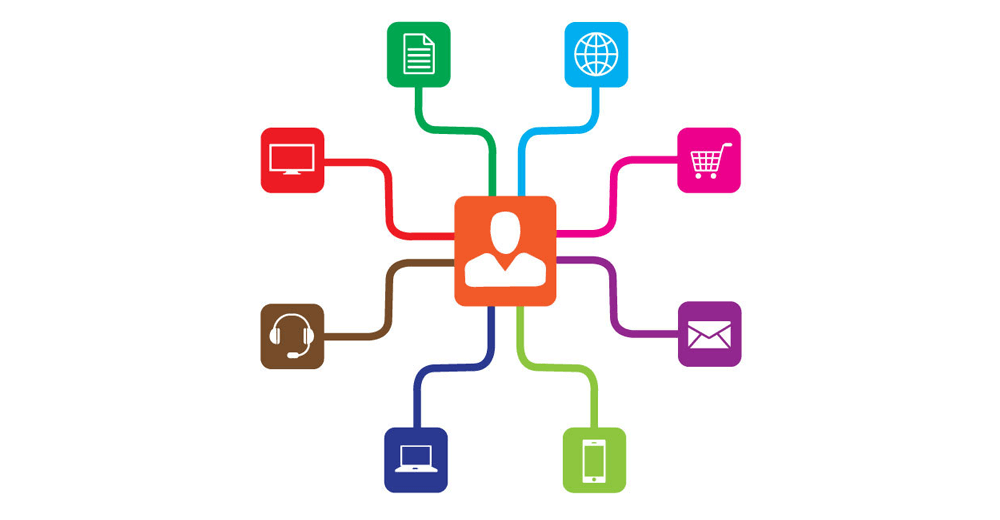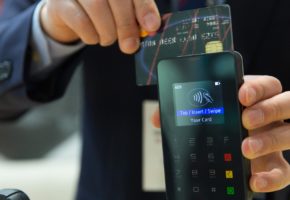

It’s clear that eCommerce is paving the way for retail innovation. Over the past twenty years online shopping has drastically altered the retail landscape in an attempt to meet the ever-changing behavior of customers. However, running a strictly online business limits the way entrepreneurs’ can meet the needs of modern shoppers. After all, we live in a world with very little separation between online and offline activity.
With so much emphasis on social and mobile shopping, how are retailers going to integrate their digital and physical spaces for the most intuitive shopping experience they can provide? Here, we’ll explore emerging omnichannel solutions and strategies that help retailers meet the growing demands of modern consumers.
What are Omnichannel Solutions?
Omnichannel is more than just a buzzword used by marketers and advertisers. It’s a cross-channel model that integrates both offline and online channels to create a seamless shopping experience for your customer. As such, eCommerce omnichannel solutions provide a robust model to meet the ever changing demands of today’s shopper.
The goal of an omnichannel eCommerce platform is to create a cohesive experience for customers that transcends compartmentalized online and offline shopping. In other words, it merges physical and digital channels to create a unified shopping experience that goes beyond simply making a purchase.
This process includes merging online inventory checks for brick & mortar shops, online customer reviews, price comparison, digital research, social media, consistent branding, digital influencers, and more. That’s because omnichannel solutions attempt to streamline the continuity between physical and digital shopping to create a unified shopping experience.
 Create a Dynamic Customer Experience in any Space
Create a Dynamic Customer Experience in any Space
eCommerce omnichannel solutions create a dynamic customer experience for shoppers online, in brick & mortar spaces, and everywhere in between. The primary driver for this dynamic experience is the smartphone as they allow shoppers to be smart consumers. Since consumers can access any available information about a product with just a few clicks and swipes, they can make buying decisions more rapidly, and with more conviction.
Consumers use their phones to access inventory information, read customer reviews, make price comparisons, all while looking for the best sales and deals. To put all of this into perspective, consider some crucial figures from Shopify and Accenture:
- 33% of consumers use smartphones to look for sales and specials
- 31% of consumers compare prices on Amazon using their smartphone
- 24% of consumers scouted prices for products on a retailer’s mobile site
- 34% of consumers use their smartphone to research products while in a store
- 56% of consumers use their smartphone to research products while at home
- 38% of consumers have used their smartphone to check inventory availability while on their way to a store
- 39% of consumers are unlikely to visit a store if inventory information is not available online
As you can see, customers use their phones as a shopping tool. They can search out deals and inventory on things they already want but they also use their phones to discover unknown products and goods through social media and online promotions. Speaking of social shopping, consumers who utilize their mobile devices may also share their finds, increasing the viability of digital “word of mouth” appeal. This process of research, discovery, and sharing is integral to an engaging omnichannel eCommerce platform.
In other words—the future of retail is most certainly digital, with some distinct human touches.
The Future of Retail
 Digital information and culture are influencing our purchases like never before, in fact digital information impacts more than half of all purchases. The disappearing borders between social media, online marketing, mobile sites, and physical stores represents an amazing opportunity to meet the needs of modern consumers.
Digital information and culture are influencing our purchases like never before, in fact digital information impacts more than half of all purchases. The disappearing borders between social media, online marketing, mobile sites, and physical stores represents an amazing opportunity to meet the needs of modern consumers.
Why is the future of retail digital? Simply put, being online allows retailers the ability to personalize shopping experiences for each customer.
When you integrate omnichannel solutions into your eCommerce site, you open a world of possibilities for your business. You can create real value for your brand by integrating social media, phone support, online and mobile access, and physical shopping to create an overall shopping experience that transcends single channel models.
Creating real connection with your customer base through omnichannel solutions creates a individual experience for each client. This translates to more sales. Indeed, omnichannel shoppers spend 50% more than single channel shoppers—meaning omnichannel shoppers have a more fulfilling, immersive experience that more often ends in a purchase.
What Do Omnichannel Solutions Look Like?
eCommerce omnichannel solutions aren’t a one size fits all formula that work exactly the same for every business. Instead, it is a method of communicating with your customer base in the most effective way for your particular business. Let’s consider an example for better clarification—Warby Parker.
Warby Parker is an eyewear company that has changed the way people try on and purchase glasses. More importantly, this former startup is represented by one of the 21st century’s most dynamic brands, with a unified and cohesive image, message, and mission.
Warby Parker’s business model blends the boundaries between social media, online shopping, home try-on, and traditional brick & mortar shopping. Shoppers can try on frames in the comfort of their home for free. They select frame options they like from the website and within a few days a box of frames arrives for them to wear, try on at home without other shoppers or clerks to interfere with the selection process, and make an informed purchase they feel comfortable with.
 Is There an App for That?
Is There an App for That?
They also offer an app that allows customers to shop frames from their phone, upload prescription information, select try at home frames, and even make purchases using a digital wallet.
While Warby Parker’s model originated online, they’ve opened traditional brick & mortar in key metropolitan locations that offer more flexibility in the way customers engage the brand, try on glasses, and make purchases. Some stores even offer eye exams.
It is a streamlined experience that blurs the boundary between smartphone, online shopping, at home try-on, and brick & mortar shopping. Through all these aspects, their brand and mission is clear and consistent. In fact, they even donate a pair of glasses to someone in need for every pair sold online or in their stores. This charitable act allows customers to have a more human connection with the company as they they get a great deal on premium eyewear while helping those in need of basic health services.
Warby Parker’s philanthropic culture, hip aesthetic, and its active social media presence place it at the forefront of many omnichannel eCommerce platforms. They sell goods as well as culture. With consistent branding across platforms and an integrated online to mobile to physical experience, Warby Parker does omnichannel the right way.
Conquering the Omnichannel Arena
As we’ve already covered, digital innovation is the future of retail. However, if brick & mortar stores are no longer the main driver for shopping how do you conquer omnichannel?
The best place to start is brand identity.
Every brand needs a recognizable face, a mission, a purpose, and yes even consistent images and color schemes. Cohesive branding is also vitally important when creating omnichannel solutions for eCommerce businesses. Think about some of the most successful companies of the past few decades and you begin to understand the importance of branding.
Some brands focus on color—red for Coke, green and white for Starbucks. Some focus on aesthetics—Apple is dedicated to silver monochrome and minimalism while Tesla is committed to futuristic, environmentally friendly design. Others on mission statement—Similar to Warby Parker, Tom’s shoes donates a pair of shoes to someone in need for every pair sold.
Brand identity needs to be planned out and properly articulated across all channels to be effective. Retailers should designate a single owner of the customer journey and experience. That’s because a cohesive image across channels is easier to build and maintain with a singular vision of brand identity.
Your brand should be consistent and cohesive across platforms—on your website, your mobile platform, your app, your social media, and even your brick & mortar store should feel like one streamlined customer interaction platform.
The Little Bookstore That Could
 Let’s consider another example of a business that is emphasizing eCommerce omnichannel solutions across all platforms—Amazon.
Let’s consider another example of a business that is emphasizing eCommerce omnichannel solutions across all platforms—Amazon.
Amazon is an industry leader when it comes to omnichannel solutions. From cookie advertisement, recommended items, customer reviews, price comparison, and recent forays into physical storefronts, Amazon is a company with a cohesive brand image that transcends channel boundaries.
The company’s exploration of brick & mortar represents a real shift in the way digital shopping is evolving. Ultimately, customers want flexibility when it comes to making a purchase; which is one of the hallmarks of an omnichannel eCommerce platform.
Amazon Prime members (customers who pay a yearly fee) are able to research and make purchases in just about every way conceivable. Prime members have access to same day shipping on many items ordered online, some deliveries are as fast as two hours. They have access to movies and TV shows on multiple devices including mobile, tablet, computer, and television screens.
Prime members can have groceries and food from local restaurants delivered right to their door. They can even shop with Alexa, Amazon’s artificial intelligence system that debuted in the past year. With an intuitive system that includes apps, home devices, smart phones, and computers, consumers are able to make every purchase and conduct all of their research without ever leaving Amazon’s strategic network of channels.
The Online Store’s Store
However, what is most radical about Amazon’s omnichannel approach is their decision to open multiple brick & mortar stores. Amazon was born online and was a big reason that many physical bookstores went out of business and had to close their doors.
However, today’s consumer wants flexibility. Just because eCommerce provides untold convenience for new generations of consumers, people still enjoy the physical and social aspects of shopping. Also, this recent approach to omnichannel retail allows customers to make purchases online and pick up their items in-store, offering a seamless bridge between the website and the real world.
Perhaps even more radical is Amazon Go. A physical store that will allow customers to grab any item they want off the shelf and simply walk out. Through checkout-free technology, customers who are using the Amazon Go app will be billed for anything they leave with, without the hassle of waiting in line to be checked out. Amazon Go is currently only open to Amazon employees, however it will be open to the public in early 2017.
Amazon is on the forefront of omnichannel shopping. With consistent, cohesive branding across channels, they offer incredible flexibility and a seamless shopping experience. From the web, delivery options, to reinvented brick & mortar stores, Amazon is leading the way in eCommerce omnichannel solutions.
Democratized, Multi-level Marketing
Blurring borders between multi-level marketing and social media is a major component of omnichannel solutions. This can be accomplished in many ways:
- Rewards for positive reviews
- Discounts for likes and follows
- Discount codes for friends
- Repost marketing for a chance to win prizes
- Shareable content
If there is a consistent theme in omnichannel solutions it is the blurring of boundaries. Marketing should feel like a natural continuation of your social presence. Make your marketing interesting, engaging, and informative. Reward engagement with discounts, deals, and customer rewards. The goal is to blur the online and offline demarcations between your marketing, rewards programs, and social engagement.
Choose Omnichannel Solutions for Success
 It’s obvious that omnichannel solutions are the future of eCommerce. In fact, most major retailers and online sites already utilize omnichannel platforms to reach customers. That’s because customers already want and expect omnichannel solutions, even if they don’t know that’s what they want.
It’s obvious that omnichannel solutions are the future of eCommerce. In fact, most major retailers and online sites already utilize omnichannel platforms to reach customers. That’s because customers already want and expect omnichannel solutions, even if they don’t know that’s what they want.
Customers want to research products online before making a trip to a store, indeed 94% of customers do online research before visiting a store. They are also influenced by customer reviews, with over 90% viewing ratings and reviews before making a purchase.
Also, customers appreciate convenience on all fronts, and some may opt to make purchases online and pick them up in store. This behavior is typically seen in urban areas, where shipping to individual home addresses in apartments, condos, or single-family homes on dense urban streets can be a logistical challenge. In fact, 50% of customers expect to make purchases online with in store pick-up.
Keep in mind that many customers will be engaging with social shopping. They’ll browse social media, see something they like, and make a purchase without leaving the app their in. Omnichannel solutions can make that happen. It isn’t just a trendy fad or a buzzword, it is the future, it is now.
Find a Partner for Omnichannel Payment Processing
 Creating omnichannel solutions for your eCommerce site will help you remain competitive by meeting the needs of modern consumers. That’s because it helps you blur the division between online and offline shopping while creating an immersive retail experience.
Creating omnichannel solutions for your eCommerce site will help you remain competitive by meeting the needs of modern consumers. That’s because it helps you blur the division between online and offline shopping while creating an immersive retail experience.
Consumers want the flexibility to shop, research, and buy online, offline, and anywhere in between. To service your future customers, you’ll need to invest in a payment processor that can help your business grow. Whether you sell goods and services in a brick & mortar store, a pop up shop, an open air market, an eCommerce site, or a combination of these, you should seek a partner that can process payments and provide support no matter where your customers are.
Allied Wallet Can Help
Allied Wallet has a long history of providing industry leading payment processing solutions for retailers around the globe. With state of the art security measures, flexible online options, and the ability to accept and process payments in international currencies, Allied Wallet can help you meet your omnichannel goals.
As a one-stop payment processor, Allied Wallet will help you process transactions online or in person. With a wide range of payment services to meet the needs of any business Allied Wallet can create a tailor made payment processing solution for you. By offering a consistent payment process on all platforms, you’ll be able to blur the boundaries between online and offline transactions and create a cohesive shopping experience that evolves with your customers.
Contact Allied Wallet today to streamline your payment processing service and implement an omnichannel eCommerce platform that works for you.






